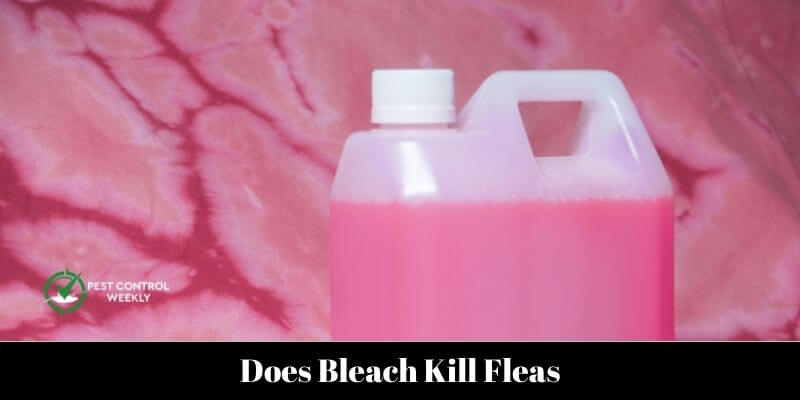When appropriately used, Bleach is a powerful disinfectant; it is frequently used to clean bathrooms or to wipe down frequently touched and shared surfaces that can lead to germ transmission. Does Bleach kill fleas when used as a disinfectant?
Yes, Due to its significant toxicity, Bleach is efficient at killing fleas at all stages of development. On the plus side, Bleach ends the lifecycle by killing the eggs and larvae of fleas, lowering the likelihood of a subsequent invasion.
Please read the entire article for more information about killing fleas with Bleach.
Can Really Bleach Kill Fleas?
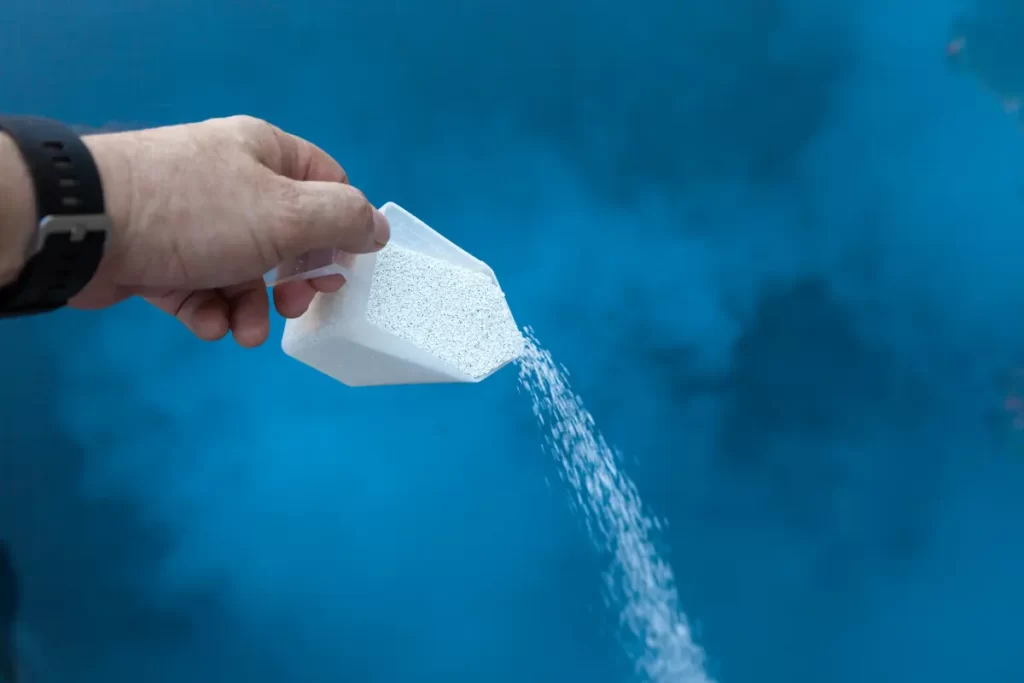
The detailed answer is that using either conventional white bleach or color-safe bleach can be an effective method for eliminating fleas quickly and thoroughly if used appropriately. During a flea infestation, laundering fabrics and beddings with bleach can effectively exterminate all life stages of fleas, from adults and larvae to eggs. Regular monthly washing of pet bedding with bleach can be particularly beneficial in maintaining a flea-free environment.
Does Chlorine Bleach Kill Fleas?
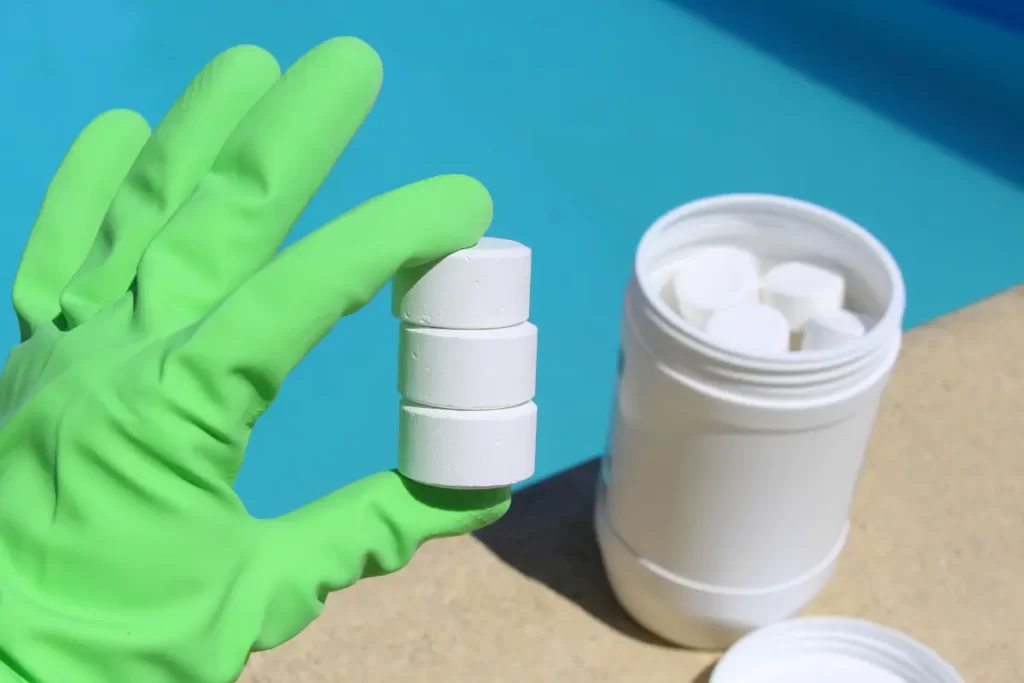
Chlorine bleach is a powerful and efficient disinfectant. It kills fleas and their eggs due to its active component, sodium hypochlorite; however, it is soon turned inactive by organic material. Household bleach that has been diluted disinfects after 10 to 60 minutes of contact, but it takes 2-3 hours for fleas to be entirely killed.
However, contact with chlorine bleach might be hazardous to your pet. Ultra-concentrated Bleach can potentially cause severe skin lesions and, less frequently, minor skin irritation. Toxic effects may cause issues with the respiratory and digestive systems if your pet accidentally consumes any of these items.
Does Oxygen Bleach Kill Fleas?
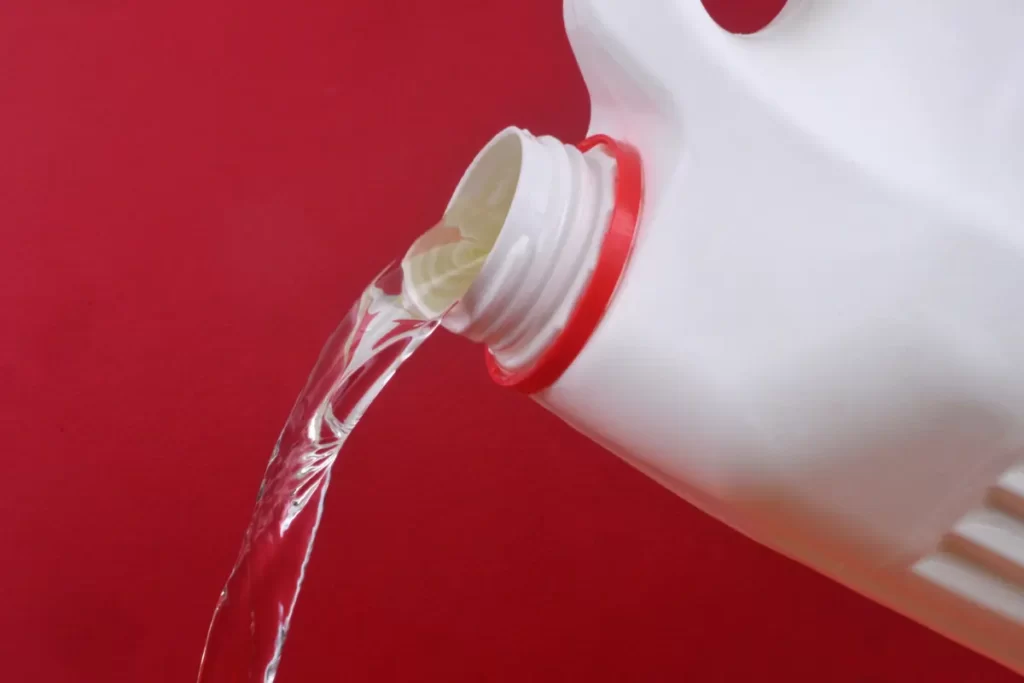
Yes, bleaching with oxygen kills fleas and their eggs. Sodium percarbonate, a chemical formed of organic crystals and hydrogen peroxide, is the main component of oxygen bleach, a chlorine-free bleaching agent.
A natural, secure, and friendly substitute for chlorine bleach that is biodegradable is oxygen bleach, often known as percarbonate of soda. It takes the place of all “Oxy” products and is a natural cleaner and stain remover.
Fleas can be killed using it on carpeting and tiling around the house. Products containing oxygen bleach brighten and whiten just like regular Bleach but without dangerous risks.
It performs many of the same functions as chlorine bleach but without hazardous effects. Bleach made with oxygen is recommended. Because oxygen bleach won’t affect you, your pets, or your plants, you should use it to clean your house to get rid of fleas on the interior and outside.
Will Bleach Kill Flea Eggs?
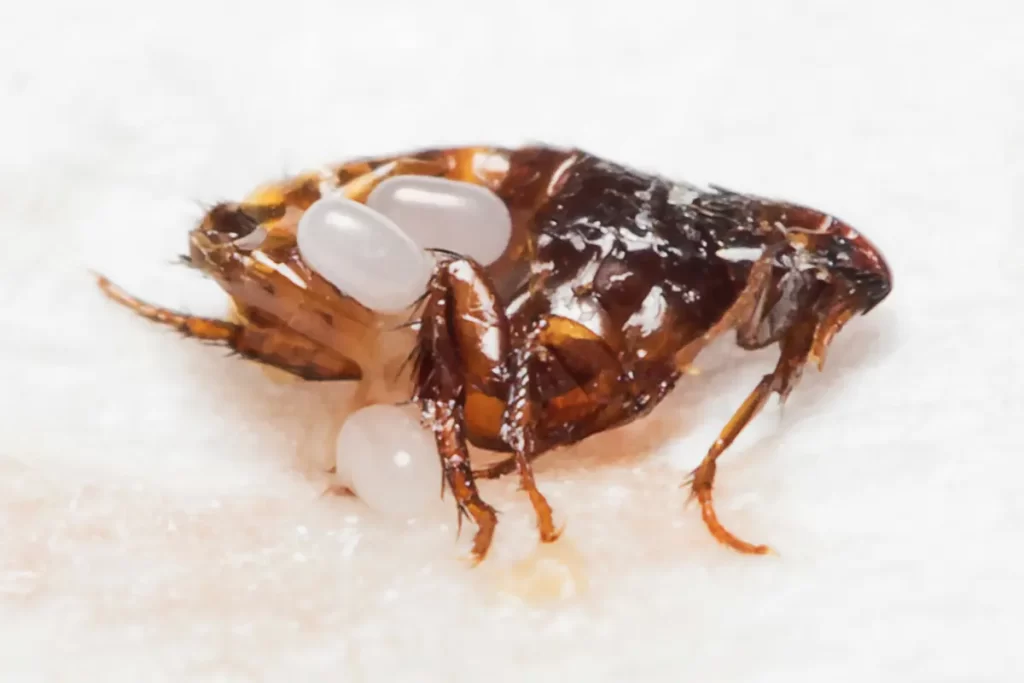
Yes, Bleach may effectively kill flea eggs. A fresh batch of fleas may hatch after the last flea in your house has been eliminated. And that may result in a fresh infestation that needs to be treated in your pet and home.
Killing fleas in your home alone won’t stop the flea cycle; you also need to eliminate their eggs. Bleach can help in completing the task of killing eggs quickly.
Fleas don’t remain on a dog or cat for very long. In order to lay their eggs, they jump off and look for warm, damp, dark spots. Fleas continually nip at you and your pet because when those eggs hatch, they can reinfest your dog and propagate throughout the house. Sadly, while most household cleaning supplies don’t harm flea eggs, Bleach does.
Does Bleach Kill Fleas Instantly?
Yes, if used correctly, Bleach kills fleas instantly. Bleach turns out to be very good at killing adult fleas, flea eggs, and a few other pests. Some flea infestations are severe and can be very challenging to treat, in addition to being irritated and feeding on the blood of the pet or even humans.
In addition, if a pet swallows an adult flea, which can result in a tapeworm infection in animals, it can result in significant health issues for house pets.
Fleas from pets or an environment with fleas can potentially bite humans. Therefore, the most efficient technique to rapidly eliminate fleas and even their eggs are to use Bleach.
Where To Use Bleach (Places)
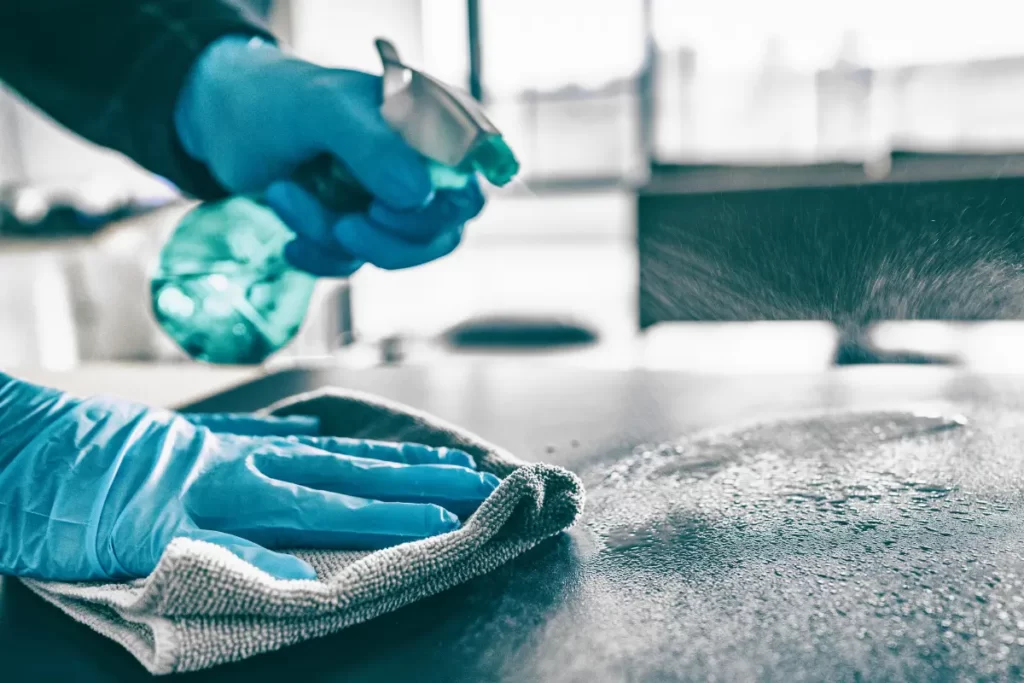
Wood Surfaces: Avoid using bleach on wood as it can damage your floors’ appearance, and fleas can remain unaffected under the surface grains.
Concrete Surfaces: Pour or scrub bleach on concrete to eradicate fleas hiding in cracks and gaps as well as around the base.
Vinyl Surfaces: Spray or scrub bleach on vinyl. Fleas can’t hide and are almost instantly killed. On older, cracked, or warped plastic floors, let bleach soak in for better results.
Carpet Surfaces: Fleas and flea eggs can be killed by spraying and scrubbing bleach into carpets. Let it sit for several hours. Use color-safe bleach to prevent discoloration.
Fabric Materials: Spraying or washing and soaking fabrics in bleach can effectively kill fleas, especially those hiding deep within the fabric.
Glass Surfaces: Spraying and wiping bleach on glass leaves no place for fleas to hide and prevents their escape.
Metal Surfaces: Apply bleach using the spray-and-wipe method. This leaves no hiding spots for fleas and prevents them from escaping.
Stone Surfaces: Like on glass and metal, the spray-and-wipe method with bleach works effectively on stone surfaces, leaving no refuge for fleas.
Does Mopping With Bleach Kill Fleas?
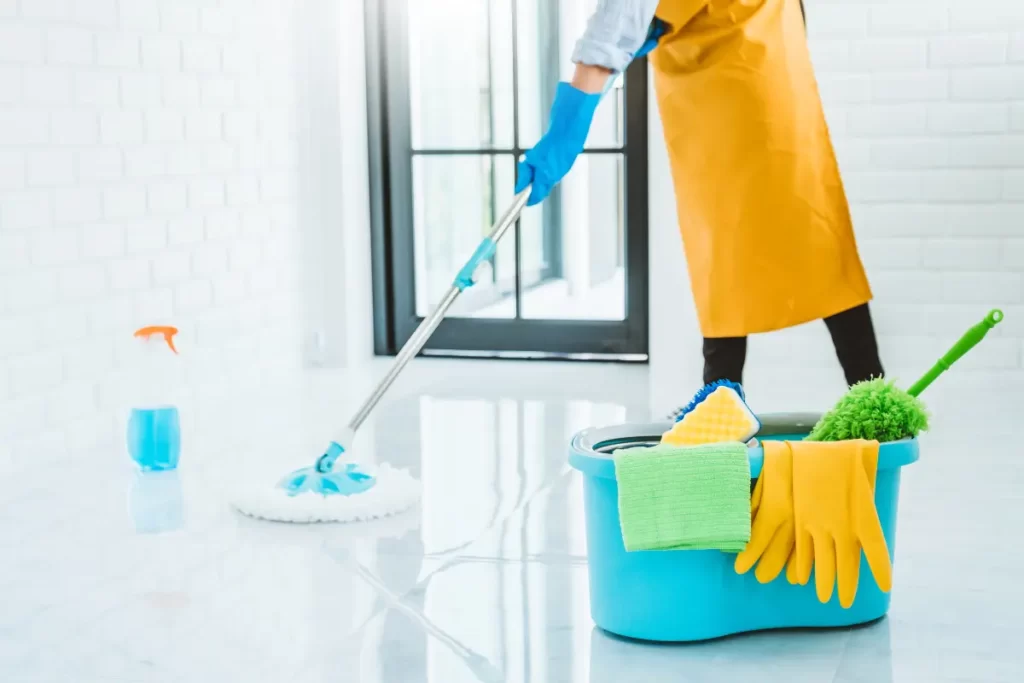
Mopping floors with Bleach to kill fleas is a good option if your flooring is not porous. Insects, biofilms, and allergies are all easily targeted by the reliable disinfectant bleach.
Fleas and their eggs can be eliminated entirely from the surface using Bleach, a disinfectant that is resistant to microbes and is also antifungal. However, on porous surfaces, the fleas are present in the surface layers, rendering removal ineffective.
Sodium hypochlorite, a highly antibacterial substance, makes up the majority of the bleach formula. Several studies have shown its resistance against fleas. Bleach is, therefore, potent in killing bacteria.
A few drops are all that is needed to thoroughly disinfect an area. This is why Bleach has been used in swimming pools and the treatment of water-borne illnesses in addition to wiping surfaces. Bleach is an excellent option because it is used for sterilizing. It is suitable with all other floors to save wooden flooring and only needs a few tools to handle.
Does Bleach Kill Fleas On Dogs?
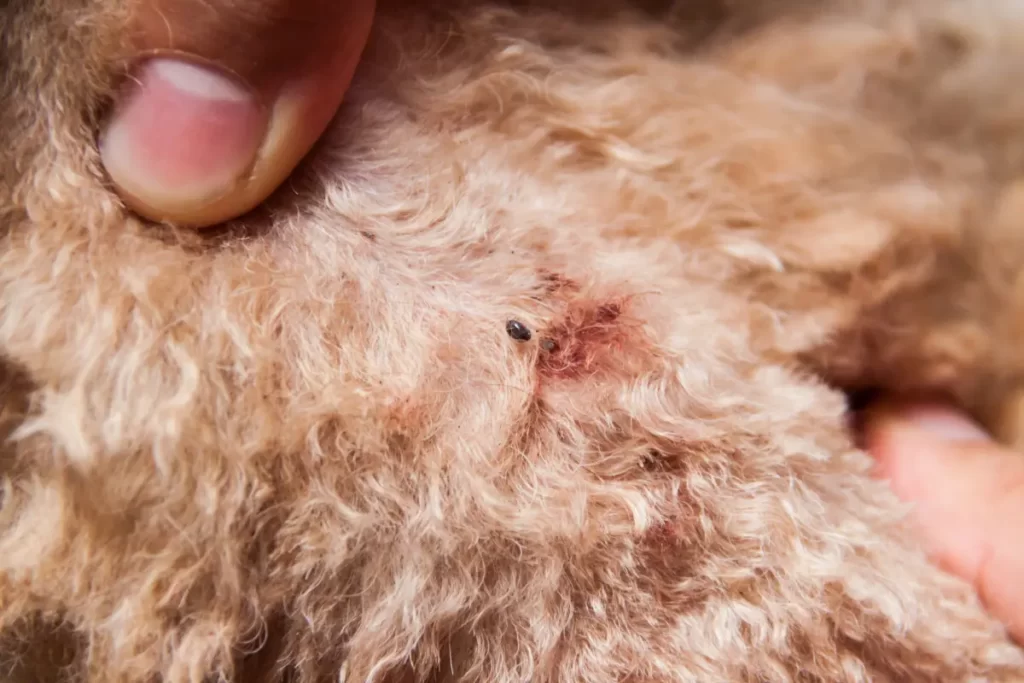
Yes, Bleach removes fleas from dogs, but it also has a negative impact on the health of dogs. One must prevent the dog from entering the places you are using Bleach to treat because Bleach is poisonous and can harm dogs who breathe it in. If a dog consumes Bleach, the toxicity level will cause the dog to die rapidly.
Furthermore, if your dog consumes Bleach, it may make them sick. Even when diluted, Bleach’s effects will start to show as soon as your dog comes into touch with it.
When a dog comes into contact with Bleach, some signs you could notice include excessive drooling, skin irritability, and redness, mouth-pawing, and vomiting.
Does Bleach Kill Cat Fleas?
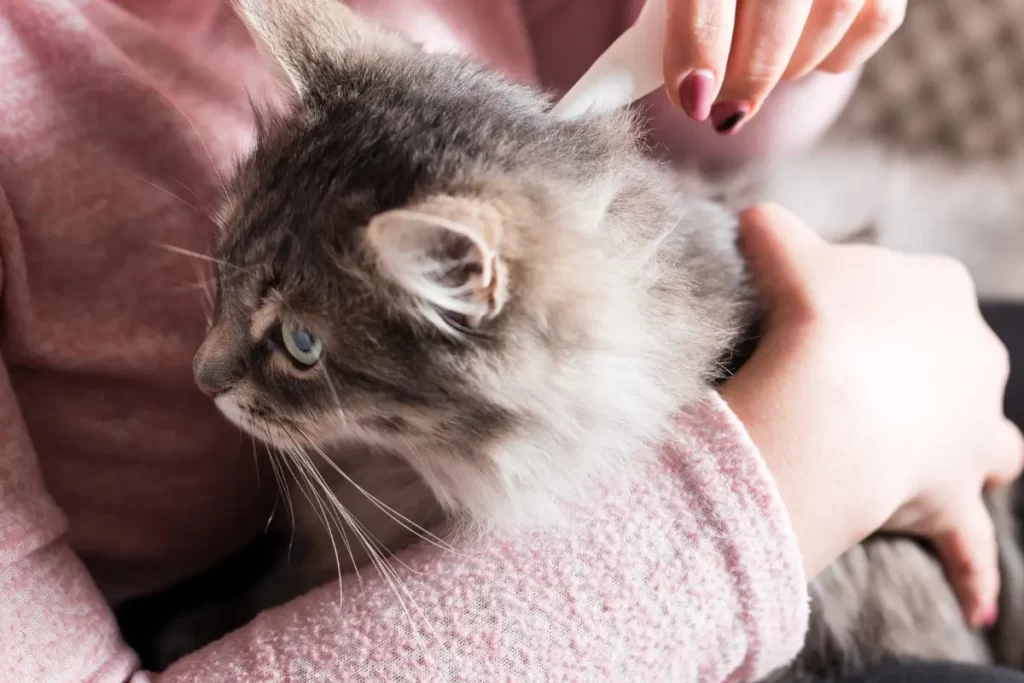
Yes, Bleach kills cat fleas, but as was mentioned earlier, putting it straight to a cat’s fur is dangerous to pets. A sodium hypochlorite (NaOCl) solution is the major element of household bleach, which is blended with minor amounts of sodium hydroxide, hydrogen peroxide, and calcium hypochlorite to kill fleas, but it is harmful to pets.
Cats’ sense of smell is far more intricate than that of humans, and a scent like Bleach may be tied to their pheromones and cause a hormonal and biochemical response. They begin licking themselves to clean their bodies as a result.
The cat may exhibit a number of signs after coming into contact with Bleach, including drooling or frothing at the mouth, a sticking-out or swollen tongue, and other signs. Lips that are red and sore, as well as the skin around the mouth, difficulty eating, Acting subdued and dreary, squinting, rubbing their eyes, and appearing to have sore paws.
Will Bleach Kill Fleas On Hardwood Floors?
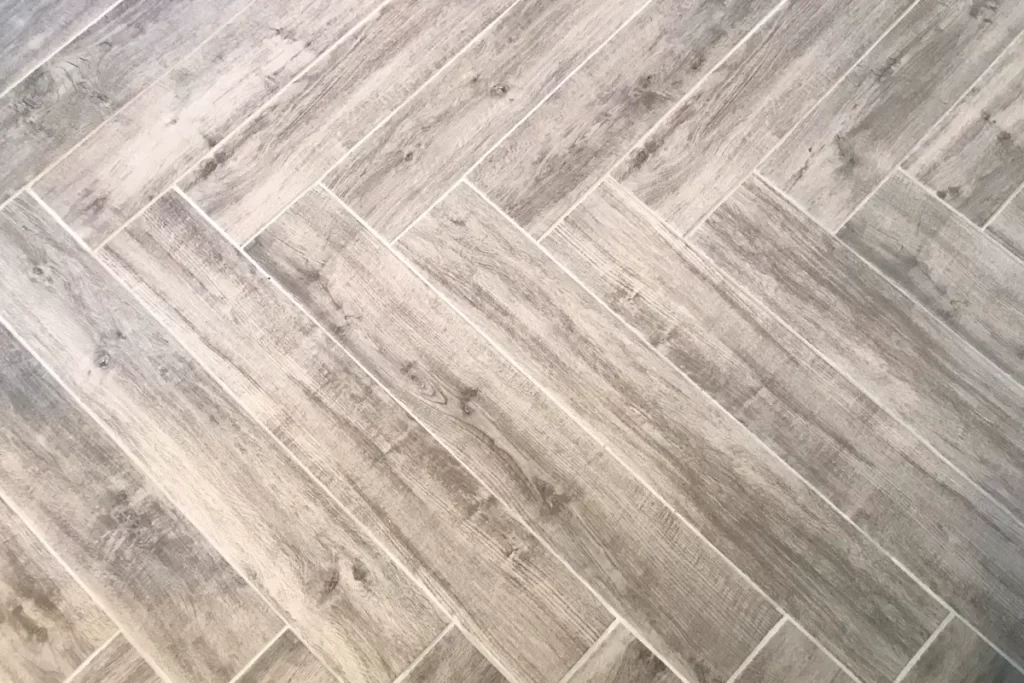
Yes, Bleach kills fleas on wooden flooring. But because Bleach is acidic, using it on a hardwood floor will seriously harm the floor. Fleas can be killed with Bleach, but no one would want to ruin their expensive hardwood floor in the process.
Because Bleach can damage the wood’s finish and penetrate into the porous fibers, producing discoloration and weakening the structure of the floorboards, it is dangerous to clean hardwood floors with Bleach to kill fleas.
Lignin, a substance found in wood that hardens and reinforces the cell walls, is destroyed by chlorine bleach. Film-forming coatings can peel off when the surface cell structure loses its integrity because there is no sound wood for them to bond to.
How Do You Mix Bleach To Kill Fleas?
- In a spray bottle, mix ten parts water with one part bleach. To combine the solution, shake the bottle. Spray difficult-to-reach locations with known flea infestations.
- To get rid of fleas and their eggs, spray the diluted bleach solution beneath heavy furniture, along baseboards, around windowsills, and on carpeting, upholstery, and non-washable pet bedding.
- Always test a small, hidden area first to make sure the surface won’t turn discolored from the mild bleach solution.
- To shield your hands from Bleach’s drying effects on the skin, put on some rubber gloves. Fleas can be killed by washing and disinfecting surfaces such as pet cages and accessories. After washing with Bleach, keep pets away for at least three hours.
- Use the warmest water you can to wash anything that can be washed. When it is safe for the cloth, add 1 cup of Bleach to the wash cycle. This will help the hot water and detergent kill flea larvae and eggs.
How Long Does It Take For Bleach To Kill Fleas?
Bleach is also quite good at killing flea eggs. It is not a quick fix, and you should plan on waiting at least two to three hours before the fleas are completely dead.
Washing bedding and clothes, and killing fleas in the dryer with Bleach will be successful and time-saving. Also, set the dryer to the highest setting. Fleas or flea larvae that have been washed and dried will be easily defeated by the mixture of water, Bleach, and high temperatures.
[4] Best Bleaches For Killing Fleas
Clorox Disinfecting Bleach
Fleas in the home can be completely eliminated with Clorox Disinfecting Bleach. While cleaning, it sanitizes, deodorizes, brightens, and also gets rid of stains. Fleas on clothing, bedding, and other items can be removed using both standard and high-efficiency washers.
While cleaning, our Bleach CloroMax Technology safeguards household surfaces, stops stains, and makes cleanup easier. As it cleans and deodorizes surfaces and gets rid of 99.9 percent of the total of fleas and their eggs on household surfaces such as counters, surfaces, restrooms, and more, this Bleach does a remarkable job. You will see the power of cleanliness via this decision.
KI Bleach
Pure Bright Bleach is a low-cost solution that is effective for disinfecting restrooms, shower stalls, baths, countertops, and cooking work surfaces from fleas. This germicidal Bleach effectively kills diseases including E. coli, Parvovirus, typhoid, staphylococcus, and Hepatitis A, and also is effective against fleas and their eggs.
Grab Green Bleach
An eco-friendly choice for killing fleas is the Grabbing Green Natural Laundry Whitener; these pods include only mineral and plant-based chemicals and don’t contain any dyes, optical whiteners, phosphates, chlorine, or other potentially harmful chemicals.
You can pre-soak your clothes for pests, especially fleas by placing one of these capsules in the sink with water.
Evolve Bleach
Clothes with flea infestations can be effectively bleached using Evolve Bleach Tablets. These simple-to-use tablets don’t include phosphate. Restaurants, kitchenware, washing machines, and other industrial cleaning applications all benefit greatly from the use of this product for cleaning and deodorizing. They also efficiently clean glass, toys for kids, toilets, and other surfaces.
Conclusion
Bleach is a strong disinfectant that can kill fleas and their eggs within 2-3 hours of contact. Bleach comes in two varieties: oxygen bleach and chlorine bleach. Sodium percarbonate is the active ingredient in oxygen bleach. When used to treat fleas, it is safe for pets, unlike chlorine bleach, which has sodium hypochlorite as its active ingredient and is harmful to animals.
Flea eggs can also be killed by Bleach quite effectively. You should plan to wait at least two to three hours before the fleas are completely dead because it is not an immediate fix.
References
Sison-Mangus, M., Mushegian, A. & Ebert, D. Water fleas require microbiota for survival, growth, and reproduction. ISME J 9, 59–67 (2015)
